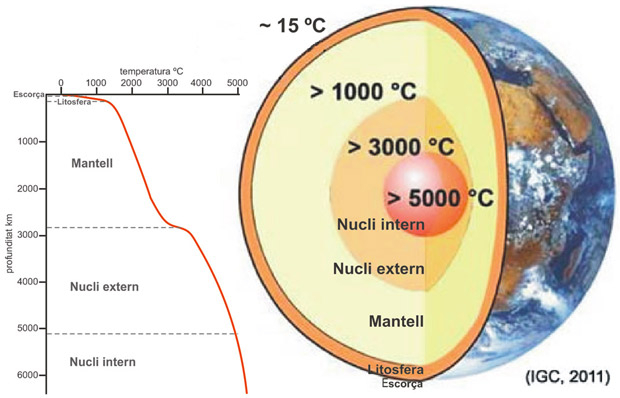The origin of the Earth's heat
The origin of the Earth's heat is the sum of physical and chemical processes that take place in the Earth's interior.
The next points explain different heat-generating processes naturally occurring in the Earth's interior, considering the location where each process takes place:
- Latent crystallization heat: It is produced in the boundary between the inner and the outer Earth's core. The inner core is in solid state while the outer core is liquid. The outer core crystallization reactions occur continuously; these reactions are exothermic and thus give off heat. This heat is called the latent crystallization heat.
- Gravitation: Gravity exerts a compression force directed to the centre of the planet, which generates heating by friction in the process of contraction of the landmass.
- Remnant heat of planet formation: It is the heat still present as a result of collisions between stellar debris of a protoplanetary disk that gave rise to the planet Earth.
- Kinetic or friction heat: It is produced between the outer core and the mantle. It is the heat energy that is released as a result of the friction produced by the different response of the outer core and the lower mantle face to the force fields generated by the Moon and the Sun (tidal forces).
- Physicochemical exothermic reactions: They take place in the mantle. The high pressure and high temperature produce the instability of minerals and phase changes occur continuously. These changes generate heat energy.
- Radiogenic decay of isotopes: It is produced at the crust and the mantle. The rocks forming the lithosphere (the sum the crust plus upper mantle) are rich in minerals that contain radioactive isotopes such as 235U, 238U, 232Th and 40K. The decomposition reactions of these isotopes are exothermic. The radiogenic isotope decay is the process that brings more heat to the surface of the Earth. It should be taken in mind that the temperature of the earth increases inwards from a surface global average of 15 ºC to more than 5000 °C in the inner core.

Distribution of temperatures in the Earth

 Contact
Contact








